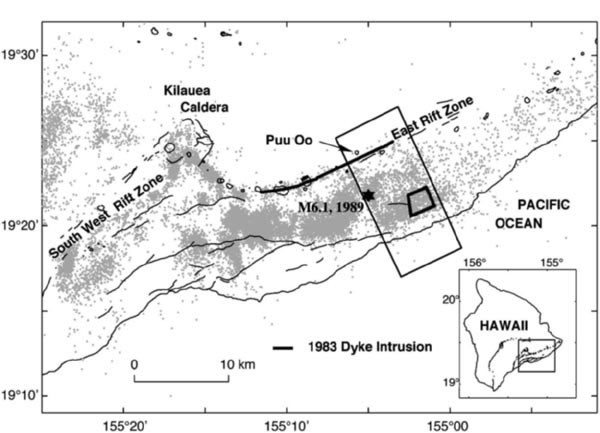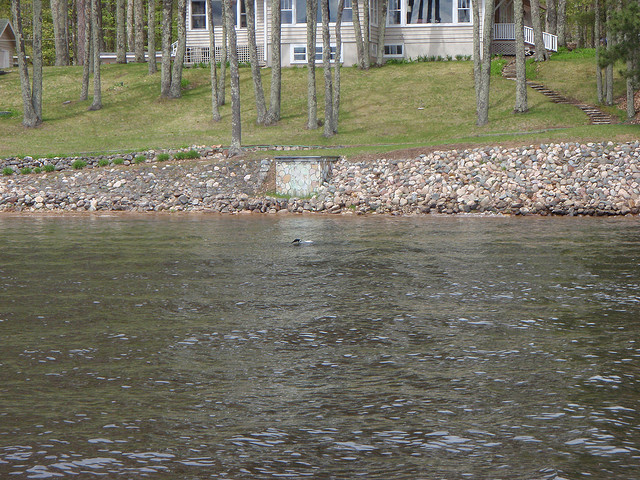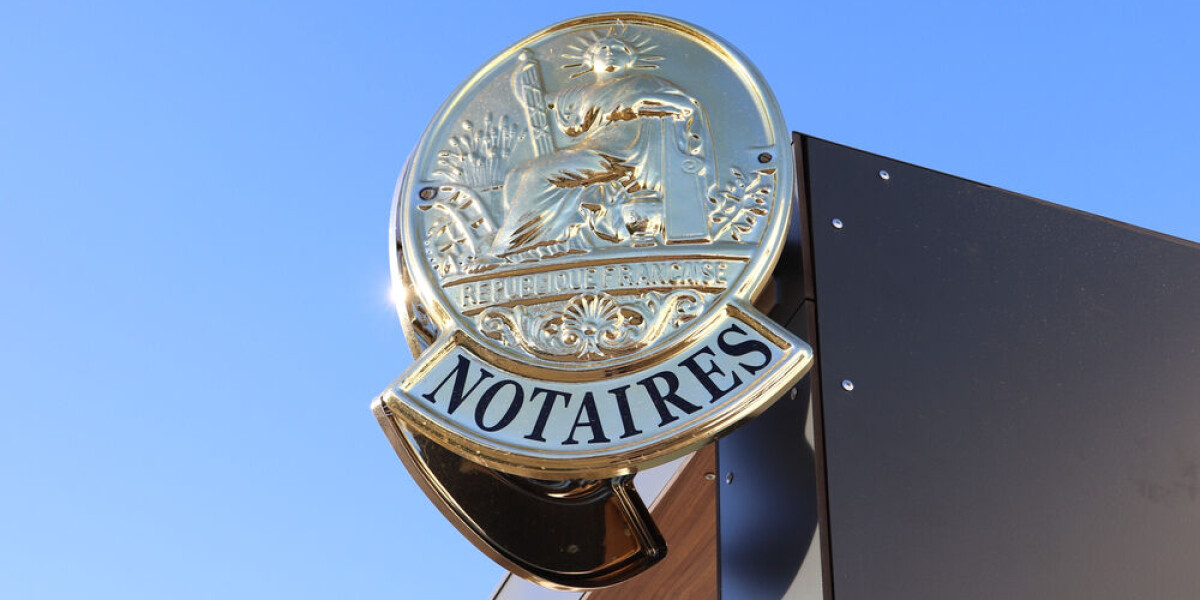
- Select a language for the TTS:
- UK English Female
- UK English Male
- US English Female
- US English Male
- Australian Female
- Australian Male
- Language selected: (auto detect) - EN
Play all audios:
ABSTRACT Stress changes in the Earth's crust are generally estimated from model calculations that use near-surface deformation as an observational constraint. But the widespread
correlation of changes of earthquake activity with stress1,2,3,4,5 has led to suggestions that stress changes might be calculated from earthquake occurrence rates obtained from seismicity
catalogues. Although this possibility has considerable appeal, because seismicity data are routinely collected and have good spatial and temporal resolution, the method has not yet proven
successful, owing to the nonlinearity of earthquake rate changes with respect to both stress and time. Here, however, we present two methods for inverting earthquake rate data to infer
stress changes, using a formulation for the stress- and time-dependence of earthquake rates6. Application of these methods at Kilauea volcano, in Hawaii, yields good agreement with
independent estimates, indicating that earthquake rates can provide a practical remote-sensing stress meter. Access through your institution Buy or subscribe This is a preview of
subscription content, access via your institution ACCESS OPTIONS Access through your institution Subscribe to this journal Receive 51 print issues and online access $199.00 per year only
$3.90 per issue Learn more Buy this article * Purchase on SpringerLink * Instant access to full article PDF Buy now Prices may be subject to local taxes which are calculated during checkout
ADDITIONAL ACCESS OPTIONS: * Log in * Learn about institutional subscriptions * Read our FAQs * Contact customer support SIMILAR CONTENT BEING VIEWED BY OTHERS WERE CHANGES IN STRESS STATE
RESPONSIBLE FOR THE 2019 RIDGECREST, CALIFORNIA, EARTHQUAKES? Article Open access 17 June 2020 ESTIMATION OF THE ORIENTATION OF STRESS IN THE EARTH’S CRUST WITHOUT EARTHQUAKE OR BOREHOLE
DATA Article Open access 09 September 2021 STRESS-DRIVEN RECURRENCE AND PRECURSORY MOMENT-RATE SURGE IN CALDERA COLLAPSE EARTHQUAKES Article 05 February 2024 REFERENCES * Simpson, R. W.
& Reasenberg, P. A. Earthquake induced stress changes on central California faults. _US Geol. Surv. Prof. Pap. _ 1550-F, 55–89 ( 1994). Google Scholar * King, G. C. P., Stein, R. S.
& Lin, J. Static stress changes and the triggering of earthquakes. _Bull. Seismol. Soc. Am._ 84, 935– 953 (1994). Google Scholar * Jaumé, S. C. & Sykes, L. R. Evolution of moderate
seismicity in the San Francisco Bay region, 1850 to 1993: Seismicity changes related to the occurrence of large and great earthquakes. _ J. Geophys. Res._ 101, 765–789 (1996). Article ADS
Google Scholar * Harris, R. A., Simpson, R. W. & Reasenberg, P. A. Influence of static stress changes on earthquake locations in southern California. _Nature_ 375, 221–224 (1995).
Article ADS CAS Google Scholar * Stein, R. S. The role of stress transfer in earthquake occurrence. _Nature_ 402, 605–609 (1999). Article ADS CAS Google Scholar * Dieterich, J. H. A
constitutive law for rate of earthquake production and its applications to earthquake clustering. _J. Geophys. Res._ 99, 2601–2618 (1994). Article ADS Google Scholar * Dieterich, J. H.
& Kilgore, B. Implications of fault constitutive properties for earthquake prediction. _Proc. Natl Acad. Sci. USA_ 93, 3787–3794 (1996). Article ADS CAS Google Scholar * Scholz, C.
H. Earthquakes and friction laws. _Nature_ 391, 37–42 (1998). Article ADS CAS Google Scholar * Stein, R. S., Barka, A. A. & Dieterich, J. H. Progressive failure on the North
Anatolian fault since 1939 by earthquake stress triggering. _Geophys. J. Int._ 128, 594–604 (1997). Article ADS Google Scholar * Linker, M. F. & Dieterich, J. H. Effects of variable
normal stress on rock friction: observations and constitutive equations. _ J. Geophys. Res._ 97, 4923–4940 (1992). Article ADS Google Scholar * Delaney, P. T., Miklius, A., Arnadottir,
T., Okamura, A. & Sako, M. Motions of Kilauea volcano during sustained eruption from the Puu Oo and Kapaianaha vents, 1983-1991. _J. Geophys. Res._ 98, 17801–17820 ( 1993). Article ADS
Google Scholar * Owen, S. P. _ et al._ Rapid deformation of the south flank of Kilauea volcano, Hawaii. _Science_ 267, 1328–1332 (1995). Article ADS CAS Google Scholar * Delaney, P.
T., Fiske, R. S., Miklius, Okamura, A. & Sako, M. Deep magma body beneath the summit and rift zones of Kilauea volcano. _Science_ 247, 1311– 1316 (1990). Article ADS CAS Google
Scholar * Gillard, D., Rubin, A. M. & Okubo, P. Highly concentrated seismicity caused by deformation of Kilauea's deep magma system. _Nature_ 384, 343–346 (1996). Article ADS
Google Scholar * Dvorak, J. J. _ et al._ Mechanical response of the south flank of Kilauea volcano, Hawaii, to intrusive events along the rift zones. _Tectonophysics _ 124, 193–209 ( 1986).
Article ADS Google Scholar * Dieterich, J. H. Growth and persistence of Hawaiian volcanic rift zones. _J. Geophys. Res._ 93, 4258–4270 ( 1988). Article ADS Google Scholar * Ando, M.
The Hawaiian earthquake of November 29, 1975: Low dip angle faulting due to forceful injection of magma. _J. Geophys. Res._ 84, 7616–7626 (1979). Article ADS Google Scholar * Got, J.,
Fréchet, J. & Klein, F. W. Deep fault plane geometry inferred from multiplet relative relocation beneath the south flank of Kilauea. _J. Geophys. Res._ 99, 15375–15386 ( 1994). Article
ADS Google Scholar * Klein, F. W., Koyanagi, R. Y., Nakata, J. S. & Tanigawa, W. R. The seismicity of Kilauea's magma system. _US Geol. Surv. Prof. Pap._ 1350, 1019–1185 ( 1987).
Google Scholar * Cayol, V. & Cornet, F. H. 3D mixed boundary elements for elastostatic deformation field analysis. _Int. J. Rock Mech. Min. Sci._ 34, 275–287 ( 1997). Article Google
Scholar * Cayol, V., Dieterich, J. H., Okamura, A. T. & Miklius, A. High rates of deformation prior to the 1983 Eruption of Kilauea Volcano, Hawaii. _Science_ 288, 2343–2346 (2000).
Article ADS CAS Google Scholar Download references ACKNOWLEDGEMENTS We thank A. Rubin for useful suggestions for this manuscript. AUTHOR INFORMATION AUTHORS AND AFFILIATIONS * US
Geological Survey, Menlo Park, 94025, California, USA James Dieterich & Valérie Cayol * Université B. Pascal, Clermont Ferrand, France Valérie Cayol * Hawaiian Volcano Observatory, US
Geological Survey, 96718, Hawaii, USA Paul Okubo Authors * James Dieterich View author publications You can also search for this author inPubMed Google Scholar * Valérie Cayol View author
publications You can also search for this author inPubMed Google Scholar * Paul Okubo View author publications You can also search for this author inPubMed Google Scholar CORRESPONDING
AUTHOR Correspondence to James Dieterich. RIGHTS AND PERMISSIONS Reprints and permissions ABOUT THIS ARTICLE CITE THIS ARTICLE Dieterich, J., Cayol, V. & Okubo, P. The use of earthquake
rate changes as a stress meter at Kilauea volcano . _Nature_ 408, 457–460 (2000). https://doi.org/10.1038/35044054 Download citation * Received: 22 March 2000 * Accepted: 24 August 2000 *
Issue Date: 23 November 2000 * DOI: https://doi.org/10.1038/35044054 SHARE THIS ARTICLE Anyone you share the following link with will be able to read this content: Get shareable link Sorry,
a shareable link is not currently available for this article. Copy to clipboard Provided by the Springer Nature SharedIt content-sharing initiative









